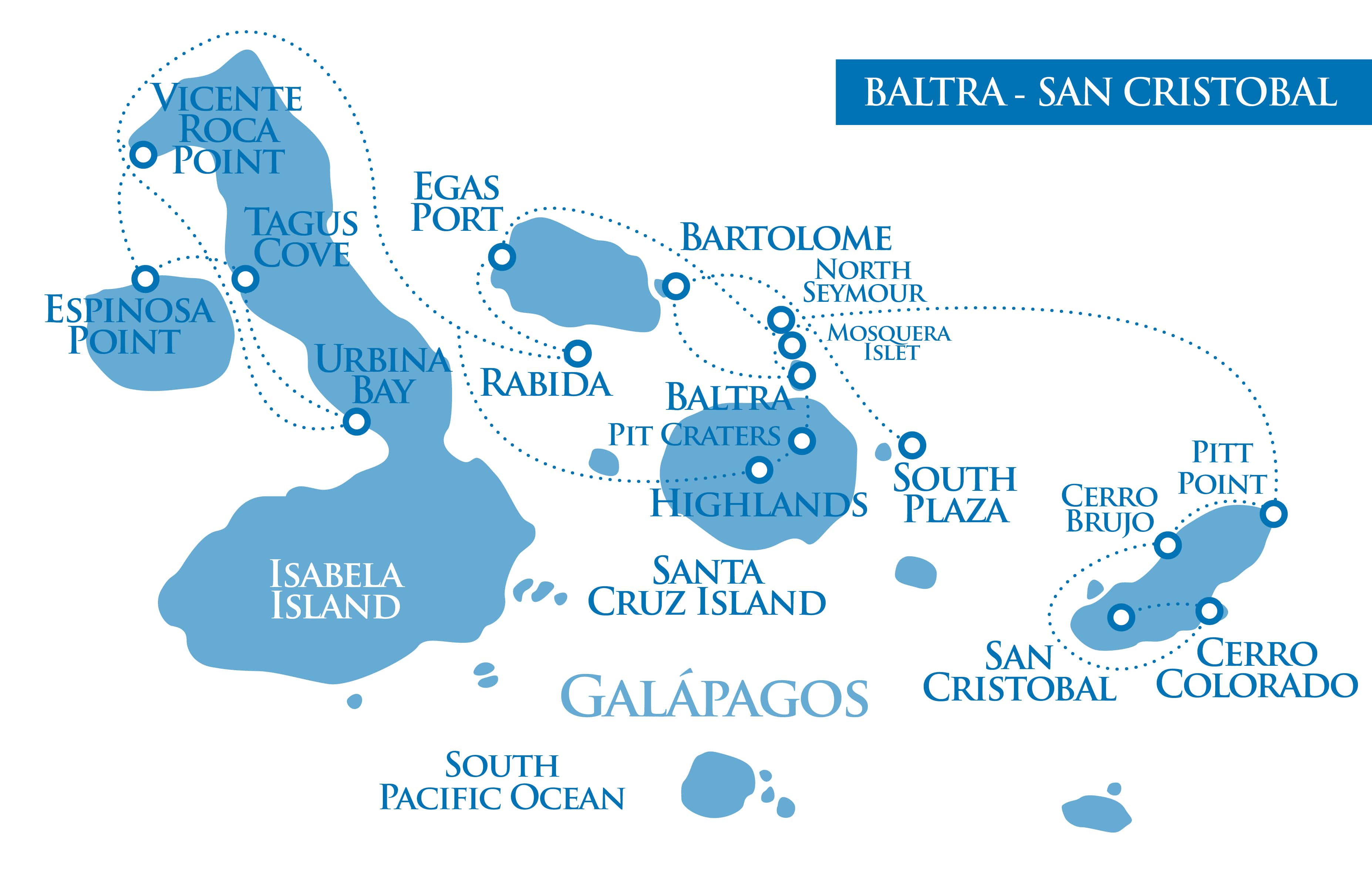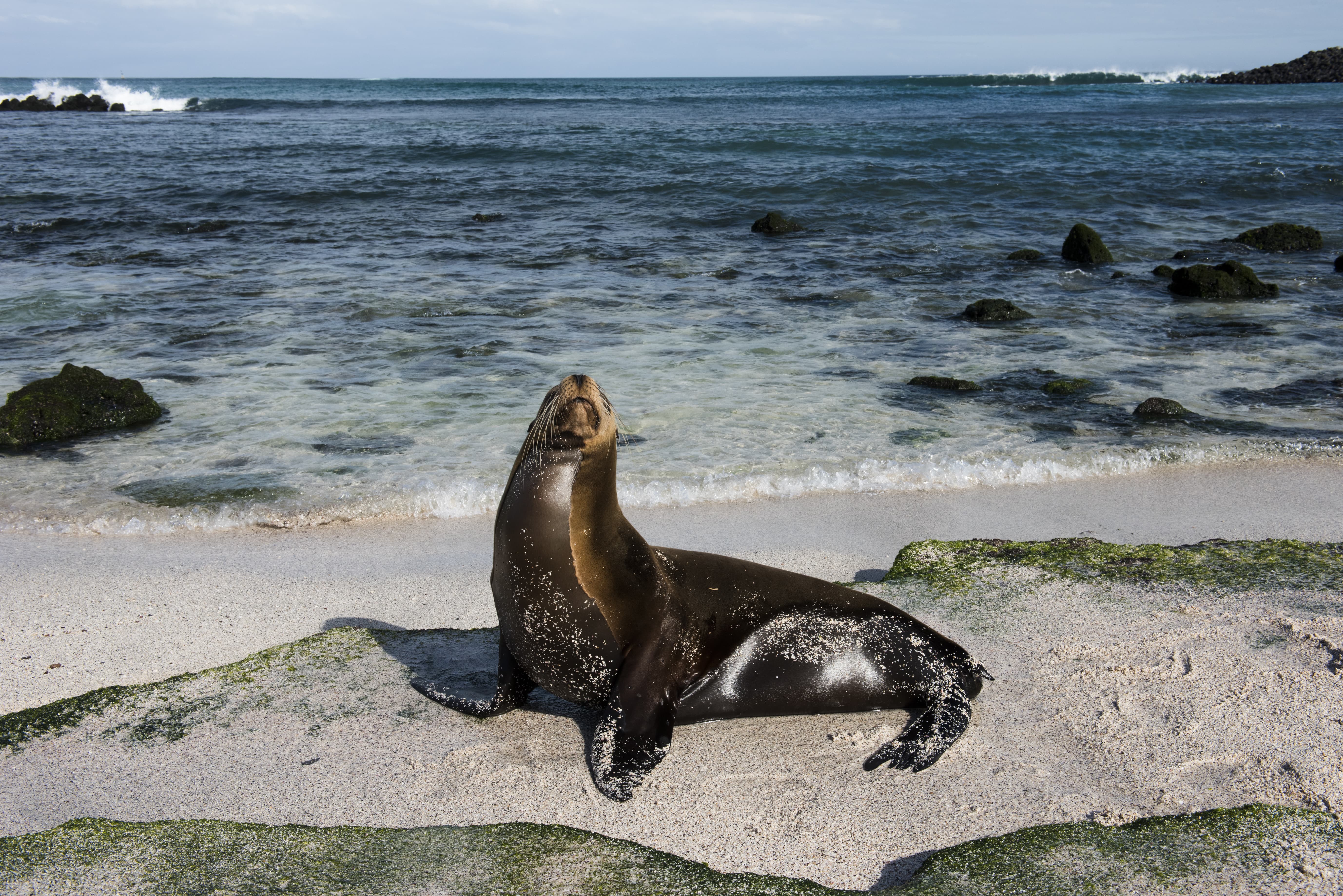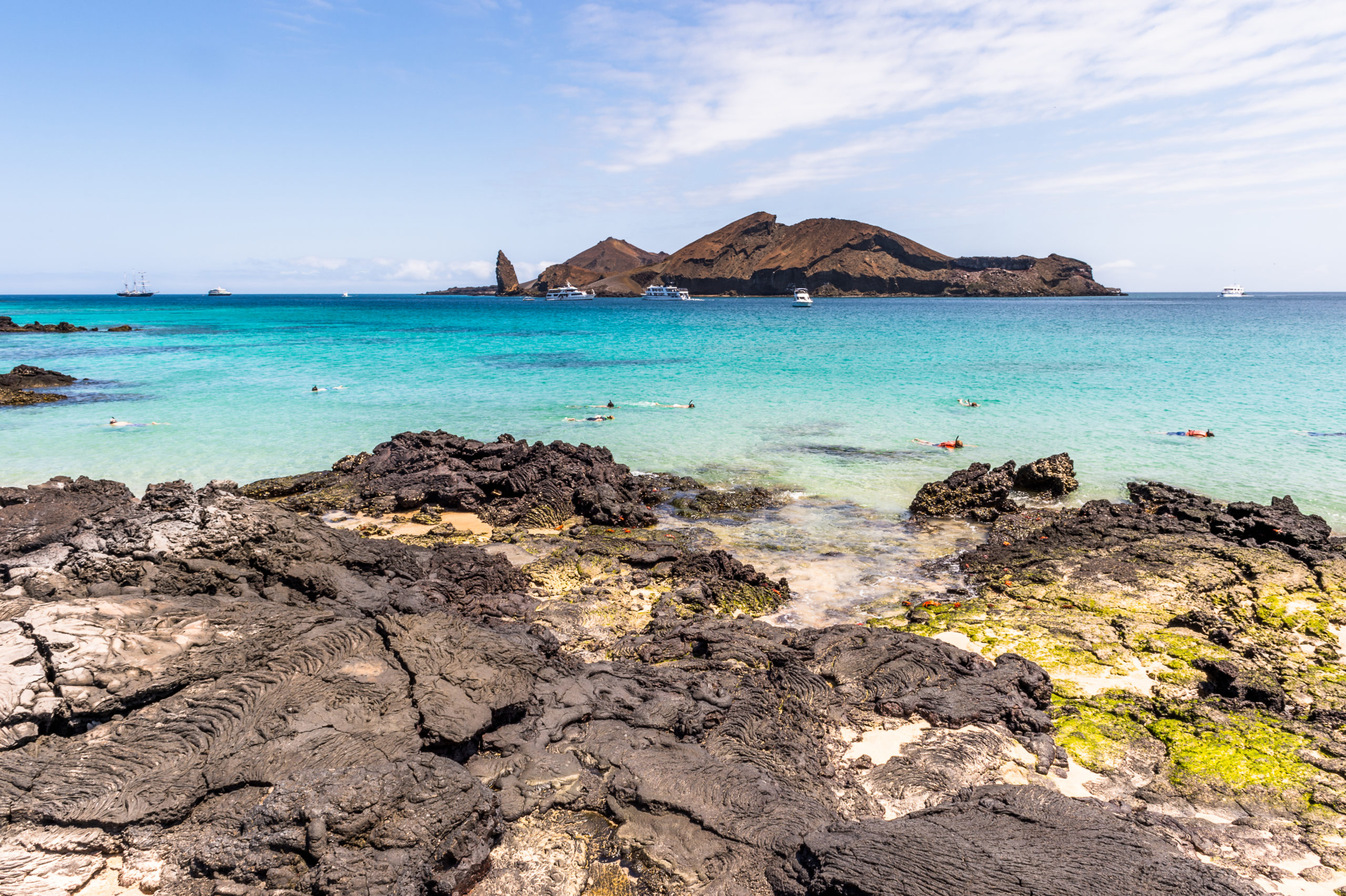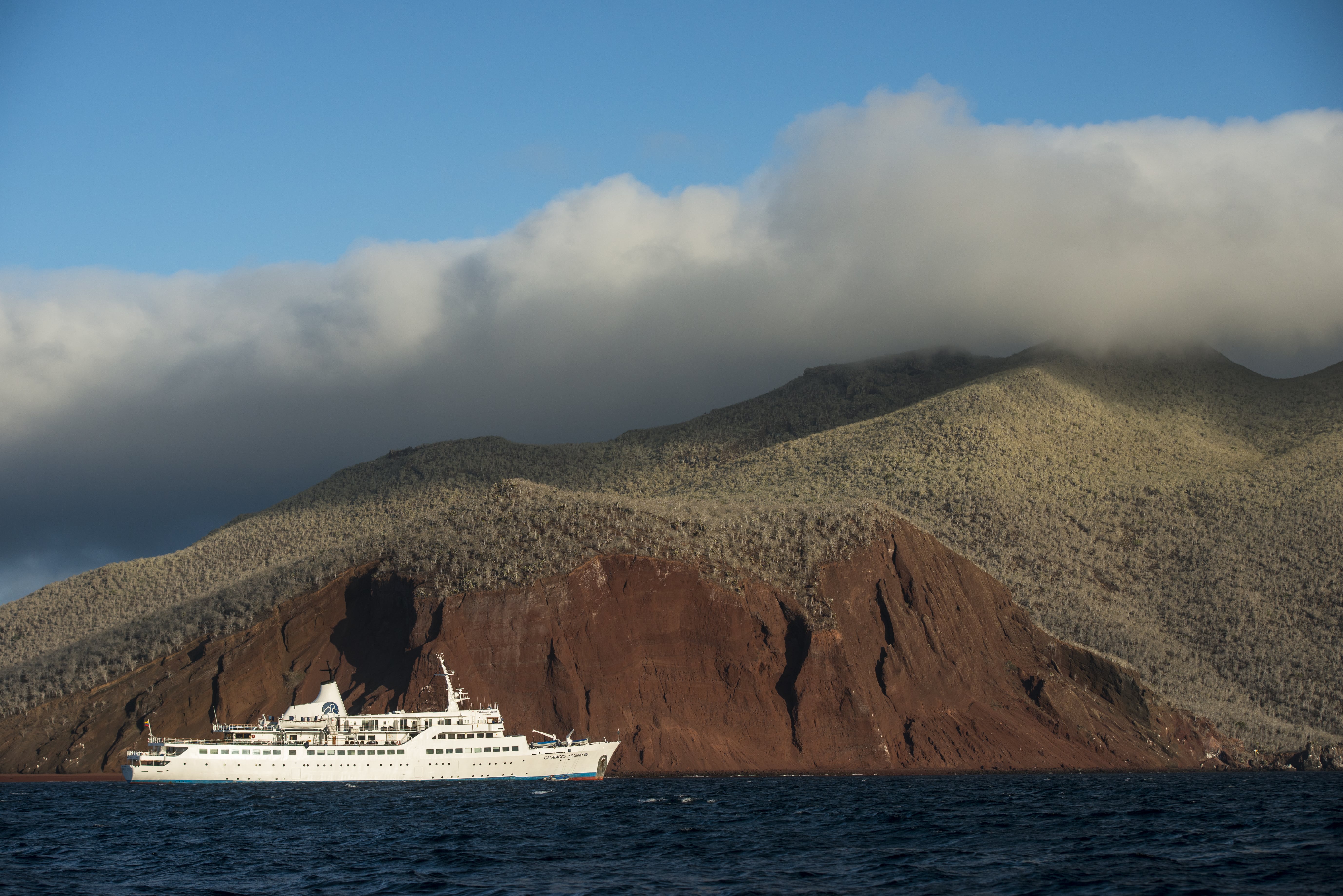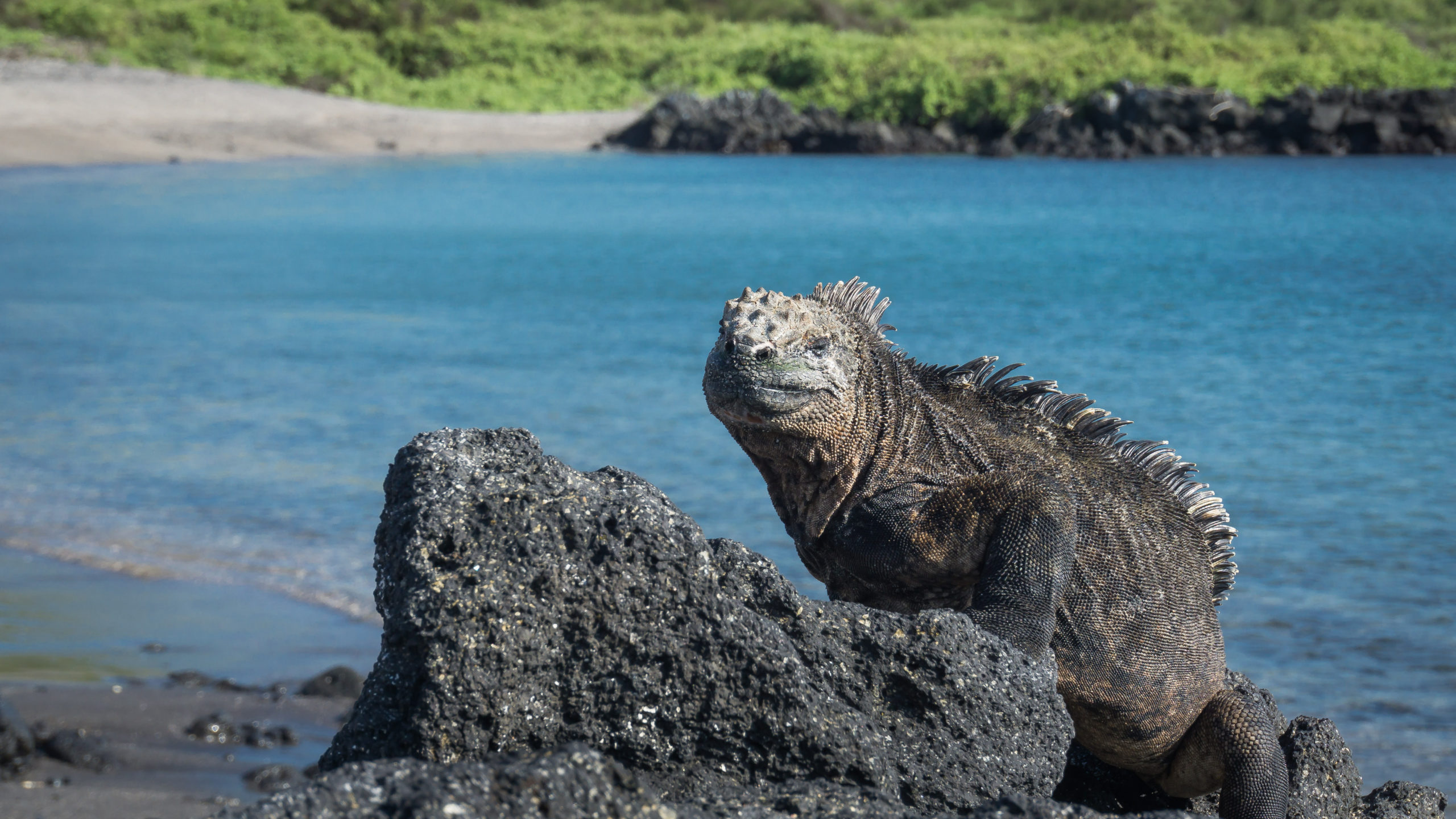Galapagos Islands
CAD $5,549.00
8 Days / 7 Nights
On this cruise to the Galapagos, let yourself be amazed by the islands’ incredible biodiversity—from the curious-looking blue-footed boobies to the venerable old giant tortoises. This may not be your typical tropical destination, but you don’t have to be an evolutionary biologist to marvel at what you see in your land and sea explorations of the islands. FREE Domestic Round-Trip Air Ticket from Quito or Guayaquil to the Galapagos. Terms and conditions apply. Get in touch with your travel professional today.
Itinerary
| Day | Destination | Activities |
|---|---|---|
| 1 | Baltra (Package B Begins)
Mosquera Islet |
EMBARKATION
Home to large colony of sea lions |
| 2 | Egas Port (Santiago Island)
Rabida Island |
Explore black sand beaches comprised of tuff cone and lava flows Spot some of Darwin’s famous finches |
| 3 | Urbina Bay
Tagus Cove |
Search for giant tortoises and land iguanas
See salt-water crater lake on Isabela Island |
| 4 | Espinosa Point
Vincente Roca Point |
Spy iguanas, sea lions, crabs, and birds
Go deep-water snorkeling in the Bolívar Channel |
| 5 | Highlands (Package B Ends)
Bartolome (Package C Begins) |
Visit a natural reserve for giant tortoises
hike up to overlook the famous Pinnacle Rock and stunning |
| 6 | South Plaza
North Seymour Island |
See a cactus forest and spy iguanas and birds
Hike and snorkel, watching for rare species |
| 7 | Pitt Point
Cerro Brujo |
Hike a trail featuring magnificent viewpoints
Sunbathe, snorkel, and visit a lagoon |
| 8 | Cerro Colorado Tortoise Reserve
San Cristobal (Package C Ends) |
Visit the tortoise breeding centre
DISEMBARKATION |

DAY 1
BALTRA / EMBARKATION / BLACK TURTLE COVE
(Package B Begins)
This truly exceptional expedition to the heart of the Galapagos begins with a departure from Quito or Guayaquil to Baltra, where you’ll board the ship.
The north shore of Santa Cruz Island is accessible only by sea. Here, four species of mangrove crowd from the shore out into the lagoon. The cove takes its name from the turtles that enjoy swimming in the tranquil waters, their heads peeking above the surface. Peering beneath the boat, you’ll see white-tipped reef sharks, rays, and fish. And in the air you’ll see sea birds such as pelicans, herons, and egrets feeding in the cove.
SULLIVAN BAY / RABIDA
Located at the southeastern portion of Santiago Island, Sullivan Bay features extensive lava flows believed to have formed during the last quarter of the 19th century. Spend the morning exploring on foot, snorkeling, or swimming.
URBINA BAY / TAGUS COVE
In the morning, make a wet landing on a volcanic “black” beach. Depending on the season, Urbina Bay is home to giant tortoises, land iguanas, and the unusual flightless cormorant. After a short walk inland, snorkeling time is allotted, giving you yet another chance to swim with sea turtles, sea lions, and countless tropical fish. The bay also boasts an ever-changing variety of flora depending on the season. Here, observe the beautiful colours of plants, many of which serve to attract different insects, birds, and reptiles. After, discover an uplifted coral reef which resulted from volcanic activity in 1954. This site also offers a spectacular view of Alcedo Volcano.
ESPINOSA POINT / VINCENTE ROCA POINT
In the morning, make a dry landing on Fernandina, where from Espinosa Point you can see the island of Isabela across the Bolívar Channel, an area that boasts one of the widest varieties of endemic sea fauna in the Galapagos. The largest, most primitive-looking race of marine iguanas can be found mingling with sea lions and Sally Lightfoot crabs. Here, you may also encounter flightless cormorants at their nesting sites, Galapagos Penguins, and the islands’ “king” of predators—the Galapagos Hawk. Pa-hoe-hoe lava formations—also known as ‘a‘ā lava formations—cover the majority of the terrain. Vegetation is scarce inland, but we encounter Brachycereus cacti and extensive mangrove beds lining the shores.
HIGHLANDS / MOSQUERA ISLET
Today, a 45-minute bus ride will take you to the Santa Cruz highlands, located to the northwest of Puerto Ayora, where you’ll find a natural reserve with giant tortoises. These enormous and slow-moving reptiles are responsible for the island’s name and therefore approaching them in their humid and forested abode is always an inspiring adventure. They can weigh between 250 and 300 kilograms and can live an astounding 150-200 years.
SOUTH PLAZA / SANTA FE
Today’s walk begins with an impressive cactus forest surrounded by land and marine iguanas. As you reach the highest point, be on the lookout for tropic birds, Nazca and blue-footed boobies, and swallow-tailed gulls.
PITT POINT / CERRO BRUJO
This morning, set off on a high-intensity hike on rocky terrain. Follow a 90-metre olivine beach, then a path that climbs to the top of a volcanic tuff through several magnificent viewpoints. This is probably the only site where the three booby species of the Galapagos can be seen together. You may also spot two species of frigatebirds and a sea lion colony on a dinghy ride, and observe even more wildlife as you snorkel.
CERRO COLORADO TORTOISE RESERVE / DISEMBARKATION
Dry landing in Puerto Baquerizo Moreno. Passengers visit the San Cristóbal giant tortoise breeding center to learn about the National Park’s conservation programs. Enjoy a beautiful landscape on the way to the reserve. You’ll also have the opportunity to visit the port village, have a drink, or shop for arts, crafts, and other souvenirs on your final morning in this Pacific paradise.
Dates & Prices
| Start/End | Nights | Sailing Schedule | Starting From |
|---|---|---|---|
| Baltra / San Cristobal Island | 7 | January - December | $5,549 |
* Price per person based on double occupancy. Due to the dynamic nature of availability and pricing, please click here to contact us directly for sailing schedule and full pricing |
Featured Inclusions

Top quality Galapagos cruise sharing

All meals on board 24-hour station

Multilingual speaking guides

Baggage handling and transfers to/from Galapagos

$584/adult, $410/child under 12 – air ticket from Quito

$65 – fuel surcharge for 4 & 3 night, $130 for 7 nights

$130 adult, $65 children under 12 – Galapagos National Park entrance fee
Ship Information

MV Galapagos Legend
Galapagos Legend cruises give a new meaning to the word nature and luxury travel. Just visiting the Islands of the Galapagos archipelago is a luxury in itself. Nature and wildlife give harmony to visitors who can approach animals that do not fear the presence of humans. A land where evolution theories and scientific reality reign and conservation strives to keep a stronghold. The Isles where Darwin gave birth to his theories, where Jacques Cousteau was marvelled by the species present and baptised the archipelago as “the last wildlife sanctuary”, the wilderness haven where YOU WILL BECOME A NATURAL HISTORY EXPLORER.

